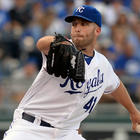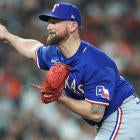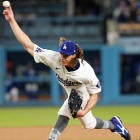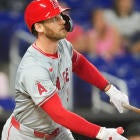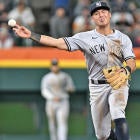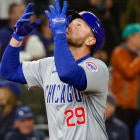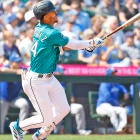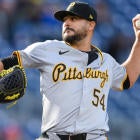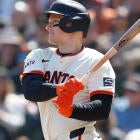To survive as a starting pitcher, you can't just go out there and try to blow away every batter you see.
Oh, sure, Aroldis Chapman can survive as a closer with a blunt approach to the job, but that's only because he knows he is going to pitch a single inning. You don't need to hold anything in reserve when you only have three outs to get -- you don't need a scalpel when a hatchet will do the job.
Starting, now that's a whole different animal. Starting a game and pitching effectively for six or more innings is like an art. Or surgery. It requires subtlety and a cerebral approach. You can't blow away every batter you face. You need a deep arsenal and you always need to hold something in reserve.
At least, that's how conventional wisdom works. Danny Duffy is trying to buck that conventional wisdom. He opened the season in the bullpen and did so with the simplified approach of your typical reliever. Pitching out of the stretch, Duffy relied on a heavy diet of fastballs and exerted maximum effort, which helped his average fastball velocity jump 2 mph from his time as a starter.
And the results were terrific. After striking out 18.0 percent of batters faced between 2014 and 2015, Duffy raised that rate to 28.4 percent in his first 16 appearances out of the bullpen. The surprise? He has been able to keep these gains up in four starts since moving back to the rotation.
Duffy has continued to average 96 mph with his fastball in this stretch and his secondary pitches have seen an uptick too. Especially his slider, a pitch Duffy threw at 80.8 mph on average last season, but has that up to 85 mph. He abandoned his slower curve last season and has completed the transition to all-out power pitcher, with all three of his pitches averaging between 85 mph and 96 mph.
And the results have been pretty good, overall.
The Royals still haven't stretched him out beyond 76 pitches as a starter, but he is looking like he might be starting to tap into some of that potential he has hinted at in the past. He has 19 strikeouts in 18 2/3 innings as a starter, with a swinging strike rate of 15.7 percent and, most importantly, just two walks over four starts.
Duffy's track record doesn't suggest he will keep this up, and it's fair to wonder if he can keep up his velocity gains when he has to throw 100 pitches. However, Duffy isn't the same pitcher he was in the past, and it's possible his new, simplified approach can make a difference.
He is owned in just 20 percent of CBSSports.com leagues and heads into Week 10 (June 6-12) with two starts on the way, in Baltimore and against the White Sox.
If you're looking for someone who can make an impact, Duffy could be a good choice if these changes stick.
Adam Duvall, OF, Reds (65 percent owned)
Let's take a look at two breakout stars of the 2016 season.
One was arguably the biggest story in the game for the first month of the season and is universally owned in CBSSports.com leagues. The other has received little press and is owned in just 65 percent of leagues:
Player A: .260 average, 14 HR, 31 RBI, 29.1 K%
Player B: .261, 15 HR, 38 RBI, 32.9 K%
Player B is Trevor Story. Player A, is, obviously, Duvall, who has been pretty much exactly as good as Story over the course of the season. He isn't a shortstop, which explains some of the disparity in excitement, but I think a big part of it is just that Duvall's hot stretch came in May, and we're less prone to excitability about hot streaks that don't come at the start of the season. Still, the free-swinging outfielder for the Reds just racked up 11 homers and 24 RBI in May, and went deep again Thursday. Duvall probably can't keep this up, but he does have 22 homers in 104 career maj0r-league games and averaged 31 homers per-150 games in the minors, so the power might be real. This is worth getting excited about.
Hyun Soo Kim, OF, Orioles (10 percent owned)
It took a while for Kim to get a real chance, as he had just 33 plate appearances in the team's first 38 games. He had a rough spring training and refused an assignment to the minors, so Kim was always going to need to prove himself. And that's exactly what he is doing lately, in a much expanded role. Kim has appeared in eight of the team's last nine games as a starter and is starting to prove his worth at the top of the lineup, batting second primarily and hitting .355 with a .444 on-base percentage in that stretch. He has been solid all season, frankly, sporting a terrific approach at the plate, something he was known for in Korea as well. Kim is getting a chance to hit at the top of a strong lineup and his ability to get on base could prove fruitful. He probably won't be a huge power or speed threat, but Kim might hit and score enough to be worth a look.

















